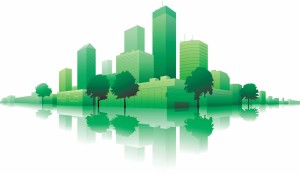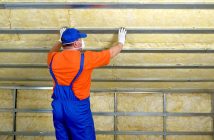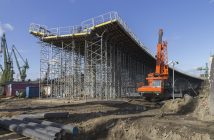The global green building materials market is expected to exhibit double-digit growth over the next five years, according to a new report.
The sector was worth an estimated US$171,475 million in 2015 and is expected to grow at a CAGR of 11.9% per cent from 2016 to 2022 to reach US$377,029 million by 2022, says Allied Market Research’s Green Building Materials Market by Product Type and by Application—Global Opportunity Analysis and Industry Forecast, 2014–2022.
Emission reduction potential of green building materials, high asset value of green buildings, growth in public awar eness regarding green materials, and increase in client and market demand are the major factors that drive the green building materials market across the globe.
eness regarding green materials, and increase in client and market demand are the major factors that drive the green building materials market across the globe.
Reduced operating costs and enhanced worker productivity due to healthier indoor environment are among the other reasons behind the market growth.
A wide variety of green building materials are available in the market including linoleum, galvalume panels, and fiber-cement composites.
New low-rise and high residential buildings, retrofits of existing buildings, and new industrial buildings are the major areas where growth of green building materials is expected.
DGNB, LEED, BREEAM, GREEN STAR, HQE, and EnergyStar are some of the certification systems that evaluate performance of the green buildings. They rate the buildings according to some set standards.
“Though, cost concerns, market barriers and lack of government policies encouraging green construction are some factors, which hinder the growth of green building materials, continuous innovation and rise in growth of building and construction sector provides a great potential for market expansion,” said Eswara Prasad, team lead, chemicals & materials at Allied Market Research.
Exterior products accounted for more than one-third of the market in terms of revenue in 2015. Employment of green building exterior products in construction industry offers energy efficiency, durability, low maintenance, and operation cost and waste reduction over traditional construction techniques.
The residential buildings segment holds the largest share by application in terms of revenue and is expected to grow at a CAGR of 11.2 per cent.
Increase in concerns regarding rise in energy prices, accelerating climate change, negative health impact associated with building materials, and stormwater runoff polluting rivers and lakes have reinforced the need for green building construction in the residential sector.
Key findings
- Asia-Pacific is expected to continue to lead the market during the forecast period followed by Europe
- Solar products market revenue is projected to grow with a high CAGR of 13.5 per cent during the forecast period
- Roofing is the fastest growing segment in green building exterior products, registering a CAGR of 12.2 per cent during the forecast period
- Brazil accounts for three-fifths share in LAMEA green building materials market in 2015
- India grows at a faster rate in Asia-Pacific green building materials market, registering a CAGR of 12.7 per cent from 2016 to 2022
- France accounts for 11.1 per cent share in Europe green building materials market in 2015
Asia-Pacific and Europe collectively contributed more than half of the share to the global green building materials market revenue in 2015.
In the same year, Asia-Pacific dominated the market, owing to the presence of healthier neighborhoods and pressure of environmental regulations pertaining harmful emissions.



